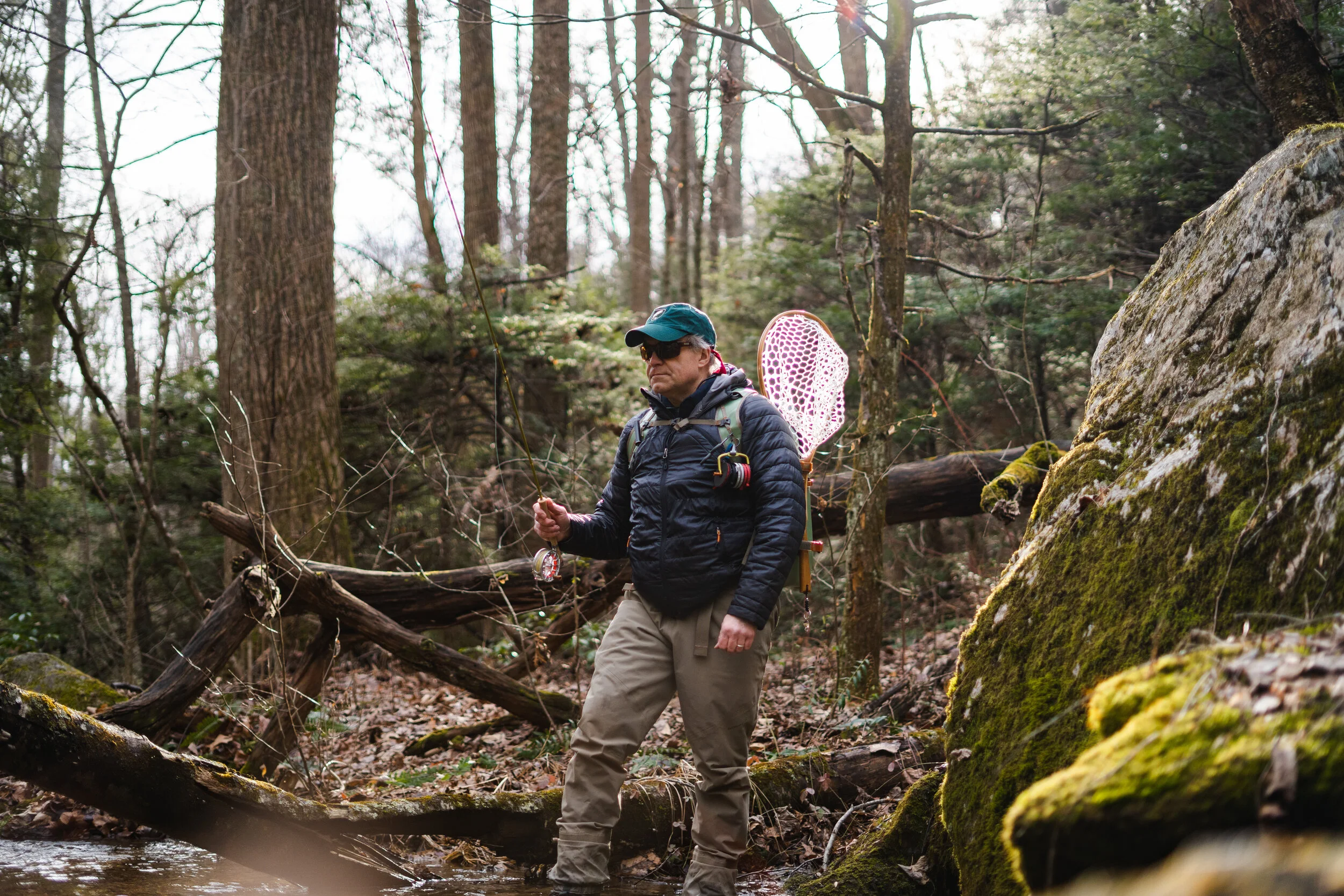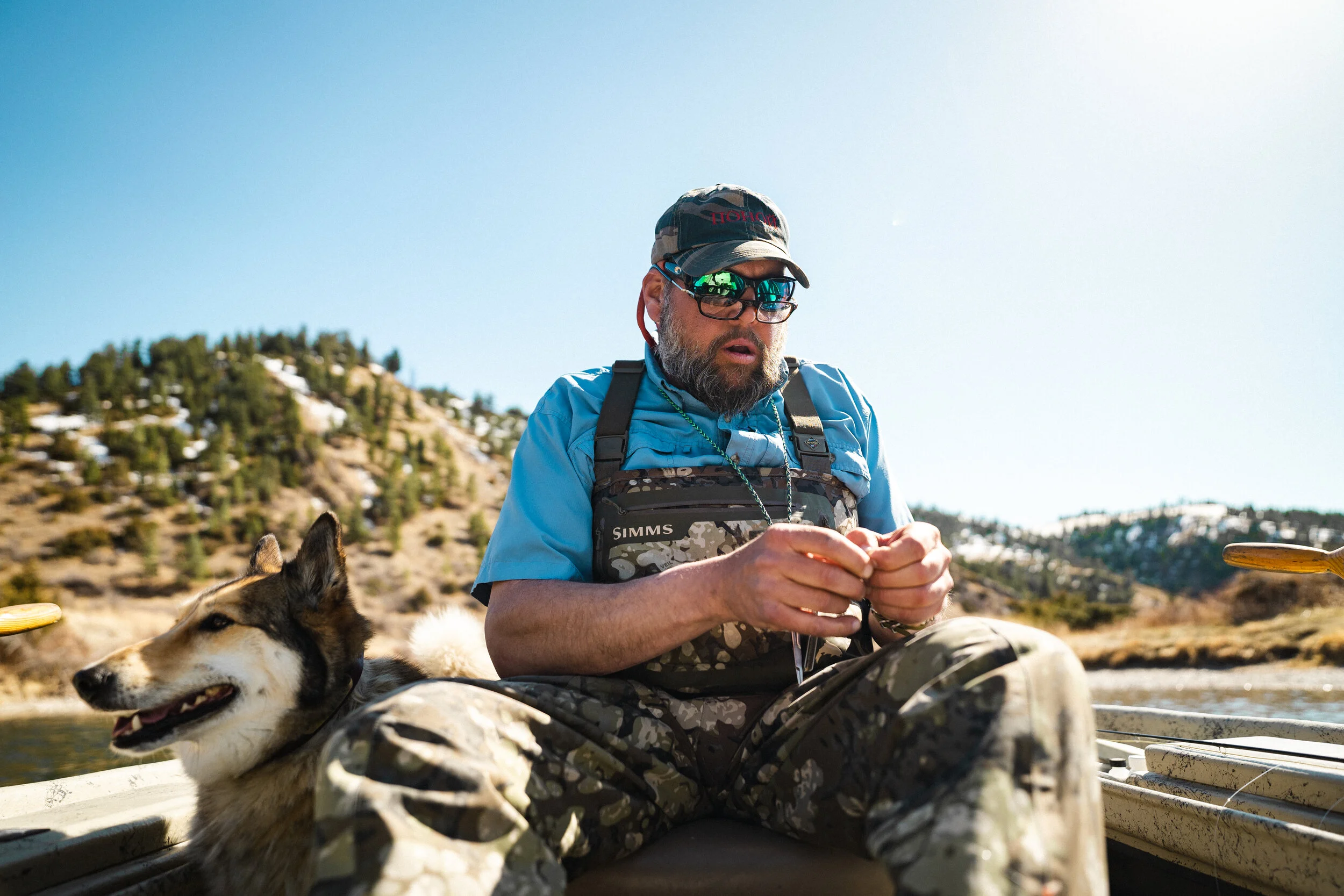As trout anglers, we’re often on the prowl in search of undetected waters that hold wild fish. Those sacred spots, riffle-filled bends, and deep plunge pools are often marked as pins in our phones to remind us of the streams less traveled. As can be expected of typical fishermen, our curiosity often gets the best of us, as we look to explore new waters. Below are some of our favorite tips for finding unknown fisheries, and what to do when you first set foot on them.
Word of Mouth, Fly Shops, and Maps.
For those in search of intel regarding the waters in a specific area, we highly recommend consulting the locals, as they likely know the water better than anyone around. Most are willing to help a fellow angler so do not be afraid to ask for advice. At a minimum, locals will typically offer a few spots as a good starting point. In addition, Fly shops typically have the most current information on stream conditions, hatches, and popular spots to access the river. Not every river or stream has a fly shop nearby, however, there are other resources available such as online state trout maps. Most states have interactive maps indicating which streams hold rainbow, brook, and brown trout. In the Summertime, the foliage can make it difficult to explore and look for new water. Exploring in the winter, when the trees are bare, offers more visibility in finding promising trout water. More adventurous anglers can use Google or Apple maps to find unknown access points, tributaries, and parking spots. Tributaries are smaller streams that flow into a larger river. When looking at maps, these tributaries look like small blue lines darting out from the main section of the stream. Trout inhabit these tributaries to spawn and seek protection from large predators, offering anglers a better chance at hooking up. If you see fish actively spawning, we highly recommend moving on and targeting a different section of the stream.
Scope the Stream.
Once you’ve arrived, we highly recommend finding a high bank and breaking up the water into segments. Finding a high bank allows a chance to scope the river and look for potential holding zones. Before making a fly choice, spend a few minutes looking for rising trout to see if the dry fly is an option. Pocket water often serves as an excellent holding zone for trout. This type of water is formed in areas where rocks create current breaks, allowing trout to consume bugs while expending minimal energy. Trout often hide near structure as it provides them with protection from bigger predators. Fishing near any type of structure such as logs, large rocks, and downed branches will dramatically increase your odds of locating trout. Another popular holding zone is the soft water around riffles. Faster water creates riffles and trout are often found in the softer surrounding water. The faster broken water creates feeding opportunities, because hungry trout do not have enough time to be picky. Deep plunge poolsl hold trout as well, but getting your flies down to the feeding zone is crucial.
Confidence Flies and Searching Patterns.
Upon arrival, you should already have a general game plan of how you intend to fish. Finally, you open the fly box and stare at your options, trying to put together the last piece of the puzzle. If you see trout rising, then we suggest trying a popular dry fly like the Parachute Adams or Elk Hair Caddis. The Parachute Adams imitates an adult mayfly, which typically involves smaller flies. Sizes 16 and 18 are most productive depending on time of year and water depth. The Elk Hair Caddis imitates
an adult caddis fly or smaller stonefly. This fly selection can be slightly larger, (sizes 12-16), due to the actual size of caddis and stoneflies. Some anglers use a technique called the dry dropper. The Dry Dropper involves using a large dry fly with a small nymph tied to the bend of the hook that hangs about 12-24 inches into the water. This technique creates an effective presentation for rising fish while also targeting fish feeding sub-surface. If the dry fly dips below the surface, set the hook and hang on for the ride. If dry fly fishing does not produce, switching to a dual nymph rig can save the day. On the east coast, one of the first nymphs that most anglers try on a new trout stream is a size 16 or 18 Frenchie. The Frenchie is a popular bead head nymph that uses pheasant tail for the body, peach ice dubbing for the collar, and bright red or orange for the hotspot. Using heavy tungsten beads gets the fly down in the water column and into the strike zone. Other popular nymphs include the Walt's Worm, Rainbow Warrior, Prince Nymph, and Pat’s Rubber Legs Stone. Streamers are also an effective method for enticing a strike. Stripping streamers through deep pools, riffles, and around structure can lead to success as well. Popular streamers include Woolly Buggers, Muddler Minnows, Sculpins, and Leech patterns. Varying the retrieve from slow to fast is a great way to increase your chances of hooking up. Once you’ve netted some fish, be sure to mimic that same retrieve pattern that brought you previous success. There’s no better feeling than researching a location, exploring the area, and landing fish on a new stream. Use these tips and techniques to get off the couch and into the wild!
Article by Native Release team member, Shane MacGregor. Visit @sdmacgregor on Instagram for more of his work!




